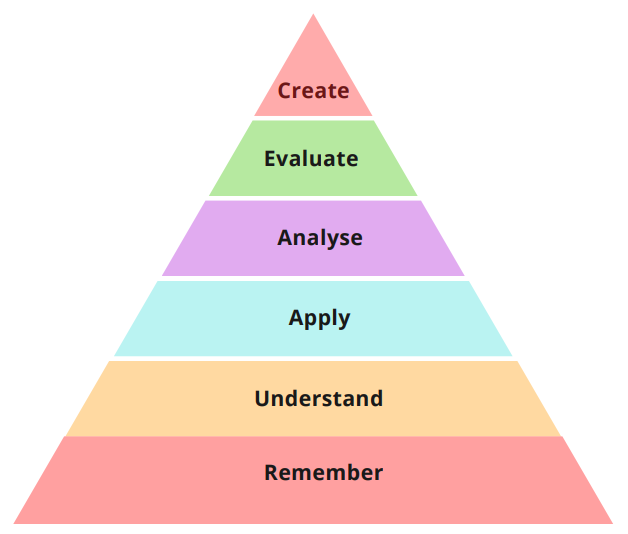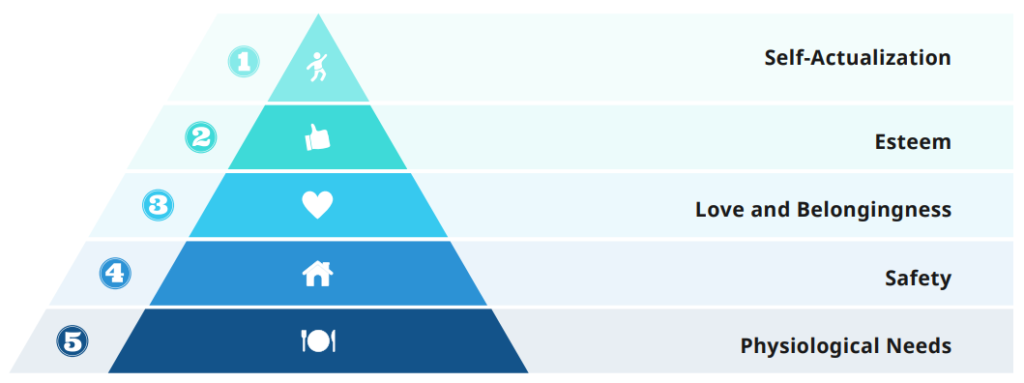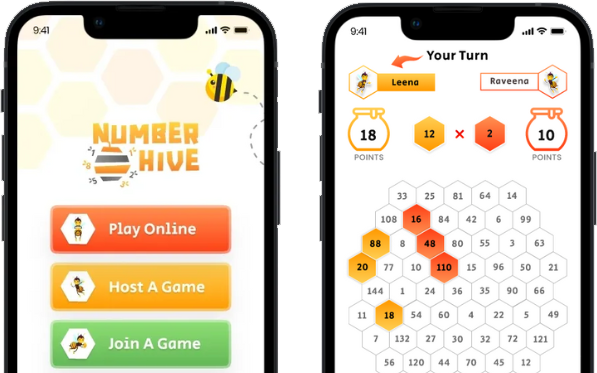
Introduction to Mathematics Anxiety
What is Math(s) anxiety? Chris Hogbin delves deep into Mathematics anxiety, it’s causes, and how you can help your students overcome it to become confident and capable Math(s) learners.
Read along, or watch our video series to find out more.
So, what exactly is Math(s) Anxiety?
Well, if you Google it, you’re going to get a varied response. We’re going to stick to this broad working definition of math(s) anxiety:
‘An irrational fear, negative attitude or emotional response towards mathematics’.
And there’s a few really key principles that we need to keep front of mind as we go on this journey.
Three things to understand about Math(s) anxiety
Firstly, mathematics anxiety manifests in many different ways for different people.
Secondly, it’s more environmental than it is genetic. Something that really blew my mind when I was doing this research is that a student’s perception of their mathematics ability plays more of a part in determining their overall success than their actual ability itself.
Thirdly, it’s not binary. With our broad working definition, it’s not helpful to think of someone as either having mathematics anxiety or not. It’s it’s far more helpful to see it as a as a sliding scale where, on one end we have someone that has math anxiety with the debilitating effects and impacts, and on the other end, we have someone who we’re going to call ‘mathematics confident’.
Math(s) anxiety is staggeringly common
Recent research indicates that at least 90% of students have experienced mathematics anxiety to some extent. So we need to consider how we can move students along that scale towards mathematics, confidence.
It’s not something you can grow out of with out help
Mathematics anxiety does not decrease with age. This for me is the most single impactful aspect of mathematics anxiety. A student doesn’t grow out of the mathematics anxiety with age. So if a student has moved down that scale for whatever reason, they don’t automatically bounce back. The implications of this huge. How many of our students have experienced mathematics anxiety in primary school and they and they carry that through, through high school, through life. And you don’t have to look too far to see disillusioned students in the mathematics classroom who have all but written themselves off.
Mathematics confidence is a journey
The great news for us is that with intervention, with that collective experience, we can we can help students, we can move them along that scale towards mathematics confidence.
Where does Math(s) anxiety come from?
Negative experiences with math(s) often lead to in task lower ability, which leads in turn to low performance, which leads to avoidance, which, you guesses it, leads to more negative experiences that cause more stress and math(s) anxiety.
The toxic cycle
You can see this toxic cycle can start at any point and it’s very, very difficult to break. As anxiety increases, the brain’s capacity to function decreases, and when you add shame and trauma into the mix it’s easy to see why this spiraling effect happens to so many students. It might start with a negative comment. It might start with a poor test score. Maybe they’re just not getting a concept, feeling embarrassed, being shamed in front of their class. Any perceived failure can impact on a student’s self-concept or the core beliefs that they hold about themselves. We briefly discussed the importance of perceived ability earlier. If a student perceives that they aren’t good at math(s), they are likely to perform accordingly. It’s a self-fulfilling prophecy.
Perception is everything
So much of what a student internalizes actually comes from the adults in their lives. So what they believe a teacher thinks or parent thinks of their ability can actually have a huge impact. You can imagine if a student repeatedly hears “it’s okay, you’re just not a math(s) person”. Regardless of intention, this feedback can create a powerful mindset and help ensure these students will never actually slide up that scale.
Students take their lead from you
As students learn, they not only internalize what teachers think about them, they also emulate and absorb their teachers and parents attitudes about other things. So there’s a good chance that your students or your kids will actually be absorbing your attitudes and beliefs towards math(s). We know from research that higher levels of math(s) anxiety in teachers themselves correlates directly to lower math(s) achievement of their students. Conversely teachers with more knowledge and less anxiety in their teaching encourage greater mathematical learning and understanding.
40% of Mathematics teachers feel poorly prepared
Unfortunately, we also know that around 40% of primary teachers feel that their own math(s) training at college or university was inadequate. Many teachers are actually uncomfortable teaching math(s) due to the significant level of math(s) anxiety that they themselves suffer. It might be from their own experience in school, it could be a lack of math(s) training, or it might be a lack of leadership or mentorship in their school. Many teachers find themselves teaching math(s), even though it’s not their area of specialisation. There are many reasons a teacher can find themselves with the self same math(s) anxiety their students face.
Compounding the problem
If we think about the journey a student takes, they’re going to encounter at least 5 to 7 different teachers in primary school alone. There is significant opportunity for math(s) anxiety being being passed on. If we don’t have teachers who are confident and who know how to provide that collective experience, it’s easy to see how math(s) anxiety takes root, where it has its beginnings. This is not about laying blame at the door of individual teachers or education institutions, but it is important to identify where math(s) anxiety comes from so that we can improve the system, for the benefit of teachers and their students.
How to build Math(s) confidence
There are two key of focus if we are to build confidence in mathematics learners:
- Student’s most important needs must be met
- Success must be reframed around learning
Let’s look at them both in more detail
1: Student’s most important needs must be met
Now we love buzzwords or buzz phrases in education, and this one’s been around for a while – but thankfully it deserves all the hype. ‘Bloom’s Taxonomy‘ is a hierarchical model for educational learning.
Bloom’s Taxonomy

Maslow before Bloom
Have you heard of Maslow before Bloom? ‘Maslow before Bloom‘ effectively notes that there are a range of other needs that need to be met before the desire for learning can happen. Now I, like many teachers, am guilty of getting this wrong. So many times I had run lessons where I’m so focused on making that learning happen that I fail to meet the students in their far more important needs. This is a sure way to induce stress and anxiety.
Maslow’s Hierarchy of Needs

Safety and belonging in the classroom
We can’t be so focused on the learning outcomes that we forget about the learner. The more research I do, the more I see the importance of a felt sense of safety and belonging in the classroom. Learning is impeded if students don’t feel safe, if they don’t feel seen, and if they don’t feel valued. So for us, what does that mean? It means we need to focus on those relationships. We need to value the whole child. In order to create this safe classroom, we must find any sources of possible shame in the environment which are so often around performance, and we need to replace them with safe practices that value the learning.
Eliminating shame
If we just think about some of the possible sources of shame that we see in classrooms (and again, this is never intentional on behalf of teachers) that can cause a whole lot of damage. Things like, ticks and crosses, score charts, or exam results posted for all to see up on the wall. Such simple and well meant activities can lead to a sense of shame, to a build up of anxiety, increased activity in the fear center the brain that directly impact on and reduce functioning in the numerical processing regions of the brain. In short, when students don’t feel safe, they will struggle to learn math. If we want to give students the best chance of becoming math(s) confident, we need to look out for their their most important needs first, and create safe environments for all to thrive.
2: Success must be reframed around learning
Safer classrooms
We’ve identified some of the sources of shame that stem from an overarching focus on a student’s performance in order to make our classrooms safer. Classroom need to be safe places for risk taking, for exploration, and for creativity. To achieve this we must redefine what it means to be successful in our classroom. We must shift that focus, change what we value. We need to move from focusing on performance to focusing on learning.
Classrooms that foster a growth mindset
In a performance focused setting, mistakes are seen as failure.
Unfortunately, we work and live in a system that emphasizes those ranks and the grades. A successful student, unfortunately, is one who ranks highly and receives a high grade, regardless of whether they’ve made progress, whether they’ve persevered, whether they’ve been creative.
However, if the overarching focus of the classroom is on learning, then a growth mindset (where it’s truly safe to make mistakes and take risks) can be fully embraced. If this is the culture, and learning is the priority, then mistakes are seen as nothing more than a helpful step in the learning process. Students stop trying to hide their mistakes (their source of shame) and begin to see them as learning opportunities. Making mistakes is a fantastic way of learning, but only if it’s during the learning process.
Learning is about so much more than grades
Learning is more than increasing a student’s rank or grade. It’s more nuanced and holistic. It should be about discovery, about helping them to explore the big questions, helping them to to learn and to love the learning, and helping them to develop agency and empathy. This is so difficult because grades are so ingrained in us all, but it can be done and it is being done. If we actually change and reshape our definition of success, around learning, we can suddenly celebrate perseverance, creativity, empathy, selflessness, self-reflection, collaboration. If we can do that, then a safe risk taking environment can be fostered, and that growth mindset can be truly embraced.
Sign up to our community for more student engagement tips, information about mathematics anxiety, and lots of other great content.
Join Our Community
Number Hive
How We Help
Resources
© Number Hive. All rights reserved.
Website made by Getmilk.



